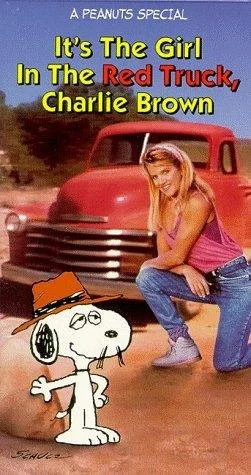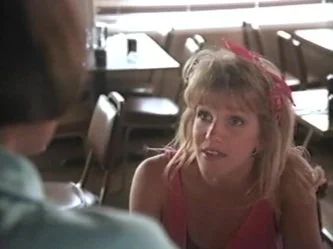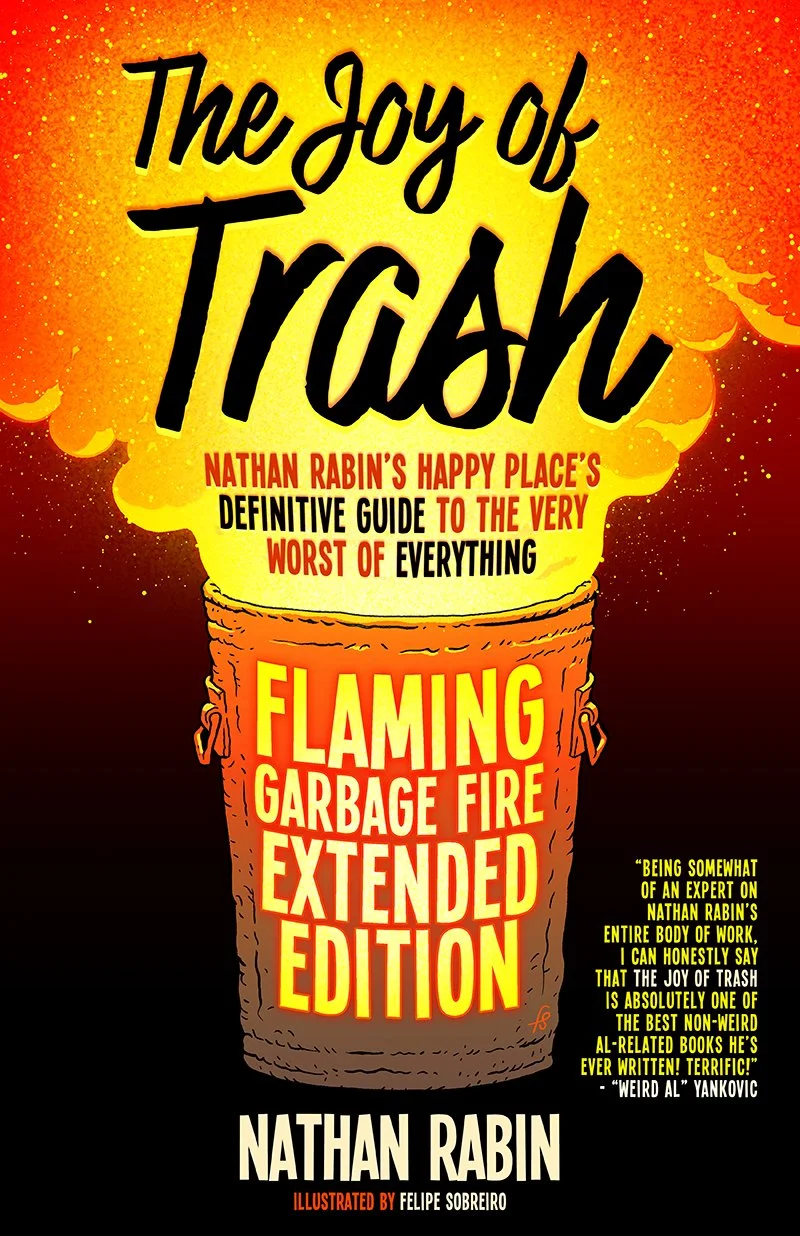There's Never a Bad Time to Rerun This Piece on It’s the Girl in the Red Truck, Charlie Brown, Starring Snoopy's Loner Brother and Charles Schultz's Own Daughter
Nobody in the history of comic strips has been as successful as Charles Schultz. No project broke his heart quite like 1988’s It’s the Girl in the Red Truck, Charlie Brown.
The great American reportedly said of his ill-fated foray into live-action/animation, "I wanted this to be my Citizen Kane, but it's not.”
That is an understatement. An ambitious hour-long special Schultz worked on for years with his son Monte as the co-writer and his daughter Jill as the star and thought would be his masterpiece instead turned into something that was politely ignored by a public that still wanted to revere Schulz and quickly sunk into more or less total obscurity.
It’s the kind of doomed experiment that attracts apologists rather than fans. It is of interest, really, to Peanuts obsessives who want to experience every piece of Peanuts-related media and connoisseurs of historic failures, such as myself.
I am a big fan of Peanuts and someone who has devoted most of his professional life to an exhaustive exploration of famous flops. Yet it nevertheless took this column sixteen years to finally get around to Schultz’s epic folly, which is astonishingly misconceived and a conceptual nightmare but not without a certain sad, melancholy charm.
The puzzling decisions begin with making the star of the special Snoopy’s sad-eyed brother Spike, an innate supporting character if ever there was one, rather than Snoopy, probably the most beloved icon in American pop culture other than Mickey Mouse or Charlie Brown, an all-too-relatable everyman whose sad slog through a cursed existence I’ve related to since I was a child.
Spike leads an odd, solitary, sad life in the California desert. He lives inside of a cactus and finds ways to occupy himself so that he does not succumb to Desert Madness.
He is a resourceful soul who follows his own curious path in a desert that scares less hearty souls away with the ever-present danger of heatstroke, dehydration, starvation, and the aforementioned Desert Madness.
Schultz adorably thought that he didn’t need to bring Snoopy and Charlie Brown into the proceedings to set up Spike as Snoopy’s much less popular sibling because audiences would already be familiar with the character.
That was just not true. Spike was, and remains, an acquired taste. If Snoopy is who we aspire to be and Charlie Brown reflects us in all our neurotic messiness then Spike is who we fear we will become if we don’t manage our depression and instead sneak off in the middle of the night to go live in the desert and forage for psychedelic mushrooms.
That is not the kind of perversely non-commercial character you want to star in a risky endeavor whose other star is a complete unknown whose only acting credit up to that point was an uncredited part as a sex worker on an episode of M*A*S*H.
With only the best of intentions Schultz set his daughter up to fail with a role that would represent an intimidating challenge for veteran actors, let alone a first timer. He set his beloved Spike up to fail as well by wildly over-estimating his appeal and suitability as a protagonist.
It’s the Girl in the Red Truck, Charlie Brown was misconceived on many levels, but it also had the misfortune to be released a few months after Who Framed Roger Rabbit.
That was long enough for people to incorrectly think of it as a knockoff when it had been in production years before the release of Who Framed Roger Rabbit. Robert Zemeckis’ timeless triumph was a great leap forward for film technology as well as a creative masterpiece that made the audience believe, if only for the length of the film, that cartoon characters could live and love and suffer alongside human beings and that live-action and animation can come together seamlessly to create a fantastical new world.
It’s the Girl in the Red Truck, Charlie Brown, in sharp contrast, never makes it seem like Spike is interacting with our world. The fusion of live-action and animation is never convincing.
For shots where Spike is the only character onscreen, the crew had to film an empty desert into which Spike would be animated later. I can only imagine how crazy-making that must have been for the director and cameraman. The desert is lovely, but they were filming nothingness.
That’s not good! Instead of illustrating the possibilities of live-action/animation, it highlighted its shortcomings, of which there are many.
The other big problem is that nothing happens in the special. It’s the Girl in the Red Truck, Charlie Brown is slow and quiet and sad, a downbeat mood piece more than a conventional Peanuts special.
The special begins with a brief, wholly animated sequence where the first-billed Charlie Brown and Snoopy get a letter from Spike about his lonely but oddly happy life in the desert as a Ted Kaczynski-style recluse.
More specifically, he writes about the title character, a cute girl with whom he exchanges waves and smiles every time she passes his home. Spike has a crush on Jenny (Schulz), the pleasant redhead, but it would never work. He’s a dog. She’s a human being. He’s a cartoon. She’s live-action. Also, if they did have any kind of relationship, it would shatter all the laws of god and man as to how people and animals should interact.
Call me a prude if you must, but I think the love between a girl and her dog should not be romantic, even if that infatuation is inherently one-sided. Jenny makes Spike’s heart sing, but she only likes him as a friend/pet.
Spike uses a tape recorder with his name on it to communicate with Jenny, who takes a liking to the suicidally depressed desert dweller. Spike leaves his cactus behind for a cushy new life with his beloved.
There’s trouble in paradise, however. Jenny is seeing Jeff (Greg Deacon), a handsome human with several advantages over Spike when courting Jenny. For starters, they belong to the same species. And he’s tall.
Technically, he only has two advantages, but that’s enough. In a subplot guaranteed to rivet children already mesmerized by the many shots of Spike wandering about wordlessly, Gerry-style, Jeff sets up an audition for Jenny for a big movie role that she resents because he didn’t ask her permission first and because she’s reluctant to leave her desert home.
In that respect, she’s like Spike, but, and I should mention this again, one is a human and the other a despondent dog, so hanky panky is strictly verboten.
Nothing happens for a very long time here, not unlike the motion picture Gerry. Then they go to a roller rink, and suddenly, the decision to give an untested actress who, in a crazy coincidence, happens to share a bloodline with the great God of Peanuts, begins to make sense.
Jill Schultz isn’t much of an actress, which would not be such a problem if this wasn’t largely a two-hander with one of the parties being a complete neophyte to acting onscreen and the other a poorly animated relation of a beloved beagle.
Jill Schultz is, however, an amazing roller dancer. Seriously. To paraphrase Fanny Brice’s famous line on Esther Williams, on roller-skates, Schulz’s daughter is a star. In regular old shoes, she ain’t.
The special only begins to develop a pulse during the skating sequence. Spike seems incongruously joyful, dancing on wheels with his forbidden crush, but when she accidentally hurls him out of a window, he wanders the night desert feeling moody and resentful.
He doesn’t realize that a bunch of lunatics in terrifying trucks are on a coyote hunt and will riddle Spike’s emaciated body with bullets if given a chance.
Jeff and Jenny find Spike before he is slaughtered by hunters and invite him to come back with them, but he demurs because it is his existential lot to be a lonely weirdo going slowly insane in the desert while writing his manifesto.
There’s a lovely sequence where Spike spots some dog hobos, and they have an old-fashioned hoedown. It’s a nice moment in part because it’s the only other time Spike interacts with animated dogs.
It’s the Girl in the Red Truck, Charlie Brown is almost perversely devoid of incident and drama, but as it lurches to a close, it gains a certain sad power. Spike’s loneliness and despair are all too relatable. He is a profoundly poignant figure.
The ending of It’s the Girl in the Red Truck, Charlie Brown, is a lot like the ending of The Searchers. Like John Wayne’s brute in The Searchers, a dog like Spike cannot be integrated into polite society. He’s too lost. He’s too wild. He’s too intent on living on his own terms.
Spike also has some real issues involving human women.
Look, I’m not saying that Spike is a weird, introverted Incel who develops a pathetic crush on a cute girl who friend-zones him so she can be with her Chad boyfriend and then throws a tantrum and sulks when he realizes the limitations of their relationship with the woman of his dreams but the only item of clothing in Spike’s entire wardrobe is a fedora.
It’s the Girl in the Red Truck, Charlie Brown, is a unique obscurity that I found strangely affecting at times even as it most assuredly does not work.
Schulz had big hopes and big expectations for this labor of love that, unfortunately, no one outside of his immediate family and some big-hearted, indulgent super-fans seemed to love.
It would launch his daughter as an actress, or at least a roller dancer. Instead, it marked the beginning, end, and entirety of her career. It was similarly going to make the world fall in love with Spike. That did not happen. He remained a consummate supporting player, the main guy’s weird brother.
It’s the Girl in the Red Truck, Charlie Brown has perhaps unsurprisingly never been released on DVD though, like seemingly everything, it is available on Youtube.
If you’re curious, I recommend watching it. It’s unlike anything I’ve ever seen and only runs about forty-five minutes.
It’s a fascinating misfire that errs on the side of being too ambitious and too personal. It was a true family affair, so its failure didn’t just affect him; it affected his children as well.
Schulz might have created one of the greatest losers in American history in Charlie Brown but he was a winner with the prominent exception of It’s the Girl in the Red Truck, Charlie Brown, which at least failed because it tried to do too much and was way too idealistic, not because it was unambitious or cynical in any way. If anything it probably should have been more cynical but its cracked sincerity is one of its most endearing qualities.
Failure, Fiasco or Secret Success: Fiasco
Nathan needed expensive, life-saving dental implants, and his non-existent dental plan didn’t cover them, so he started a GoFundMe at https://www.gofundme.com/f/support-nathans-journey-to-dental-implants. Give if you can!
Did you enjoy this article? Then consider becoming a patron here.













